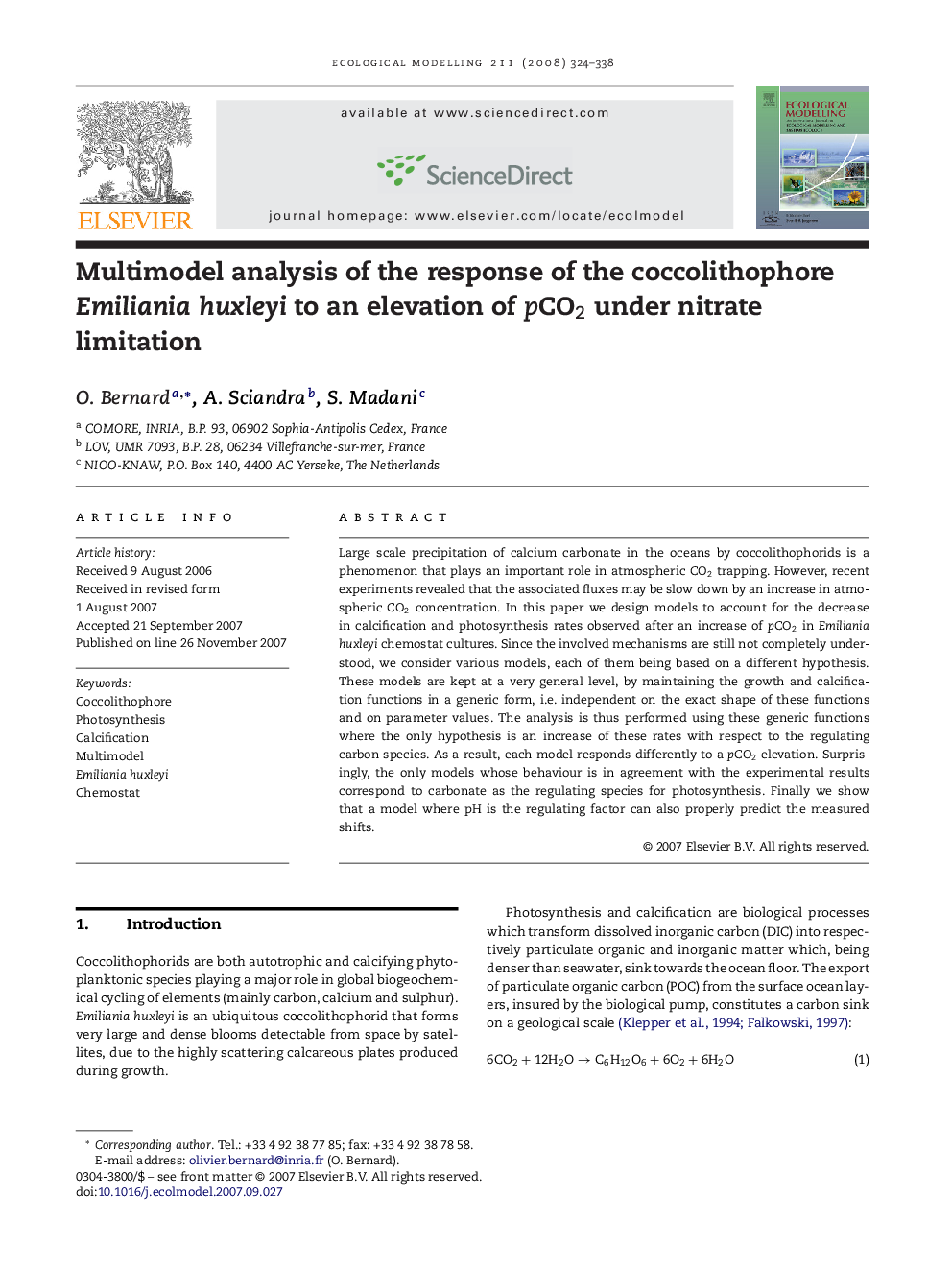| Article ID | Journal | Published Year | Pages | File Type |
|---|---|---|---|---|
| 4378126 | Ecological Modelling | 2008 | 15 Pages |
Abstract
Large scale precipitation of calcium carbonate in the oceans by coccolithophorids is a phenomenon that plays an important role in atmospheric CO2 trapping. However, recent experiments revealed that the associated fluxes may be slow down by an increase in atmospheric CO2 concentration. In this paper we design models to account for the decrease in calcification and photosynthesis rates observed after an increase of pCO2 in Emiliania huxleyi chemostat cultures. Since the involved mechanisms are still not completely understood, we consider various models, each of them being based on a different hypothesis. These models are kept at a very general level, by maintaining the growth and calcification functions in a generic form, i.e. independent on the exact shape of these functions and on parameter values. The analysis is thus performed using these generic functions where the only hypothesis is an increase of these rates with respect to the regulating carbon species. As a result, each model responds differently to a pCO2 elevation. Surprisingly, the only models whose behaviour is in agreement with the experimental results correspond to carbonate as the regulating species for photosynthesis. Finally we show that a model where pH is the regulating factor can also properly predict the measured shifts.
Related Topics
Life Sciences
Agricultural and Biological Sciences
Ecology, Evolution, Behavior and Systematics
Authors
O. Bernard, A. Sciandra, S. Madani,
